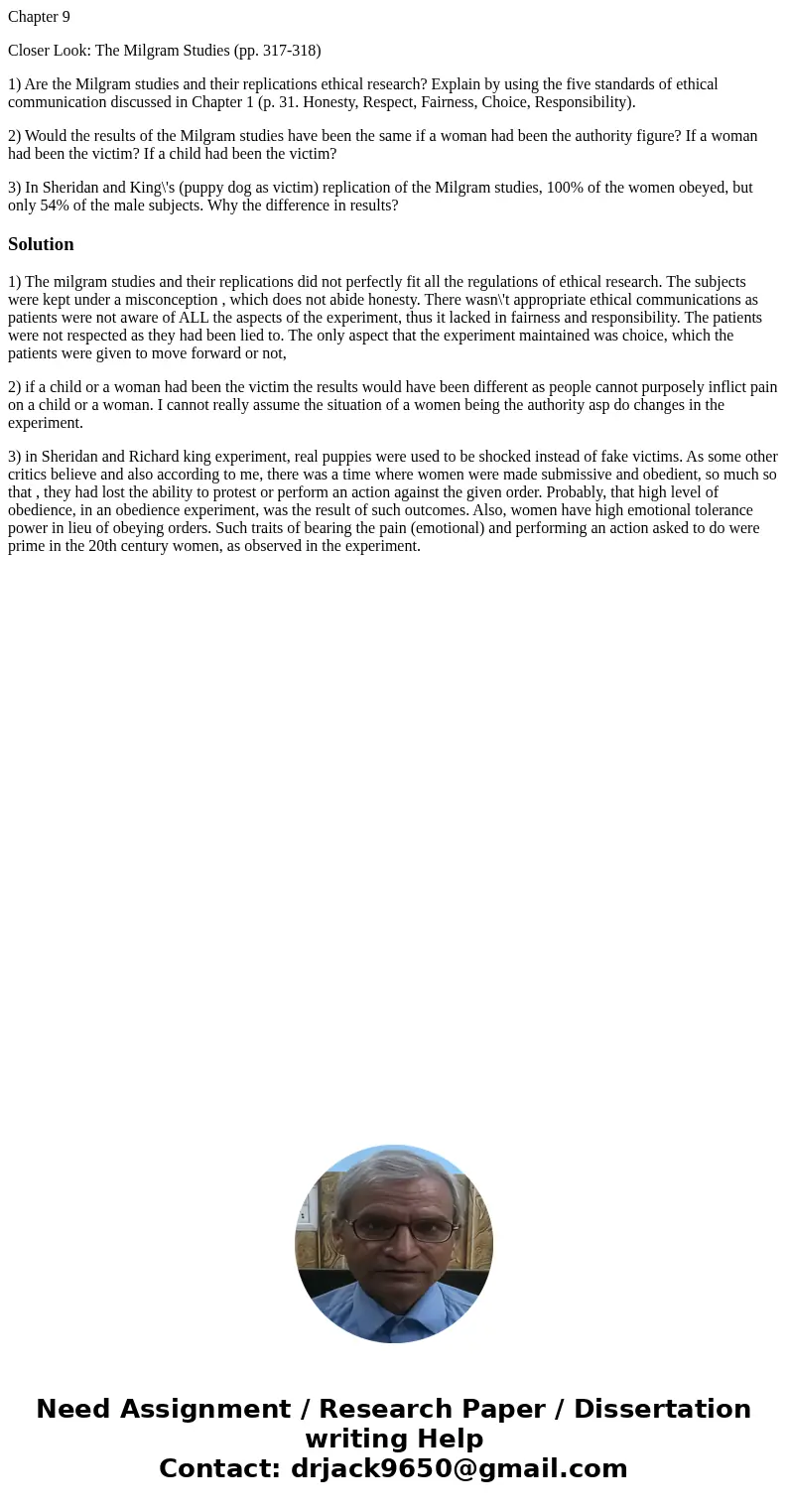Chapter 9 Closer Look The Milgram Studies pp 317318 1 Are th
Chapter 9
Closer Look: The Milgram Studies (pp. 317-318)
1) Are the Milgram studies and their replications ethical research? Explain by using the five standards of ethical communication discussed in Chapter 1 (p. 31. Honesty, Respect, Fairness, Choice, Responsibility).
2) Would the results of the Milgram studies have been the same if a woman had been the authority figure? If a woman had been the victim? If a child had been the victim?
3) In Sheridan and King\'s (puppy dog as victim) replication of the Milgram studies, 100% of the women obeyed, but only 54% of the male subjects. Why the difference in results?
Solution
1) The milgram studies and their replications did not perfectly fit all the regulations of ethical research. The subjects were kept under a misconception , which does not abide honesty. There wasn\'t appropriate ethical communications as patients were not aware of ALL the aspects of the experiment, thus it lacked in fairness and responsibility. The patients were not respected as they had been lied to. The only aspect that the experiment maintained was choice, which the patients were given to move forward or not,
2) if a child or a woman had been the victim the results would have been different as people cannot purposely inflict pain on a child or a woman. I cannot really assume the situation of a women being the authority asp do changes in the experiment.
3) in Sheridan and Richard king experiment, real puppies were used to be shocked instead of fake victims. As some other critics believe and also according to me, there was a time where women were made submissive and obedient, so much so that , they had lost the ability to protest or perform an action against the given order. Probably, that high level of obedience, in an obedience experiment, was the result of such outcomes. Also, women have high emotional tolerance power in lieu of obeying orders. Such traits of bearing the pain (emotional) and performing an action asked to do were prime in the 20th century women, as observed in the experiment.

 Homework Sourse
Homework Sourse